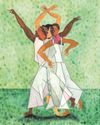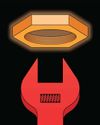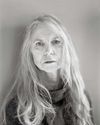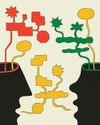
We were too late. For weeks, the Davidia—the ghost trees—had been shedding their loose white blooms, like translucent handkerchiefs. Jacqueline Rose pocketed them on her walks around her London neighborhood of West Hampstead—the kind of long, looping tour she had begun taking daily during the pandemic. She brought me on one such walk, late this spring, but the specimens we found were sad: squashed, yellowing smudges. “About two weeks late,” she assessed, studying them. Never mind. There was a handsome lime tree to admire. There was a florist to avoid (“racist”) and a florist to visit. We lingered over shaggy mums and reluctant new lilies, bound tight in their buds. Groups of shouting boys ran by in ghastly magenta school blazers. “Who designed the jackets?” I wondered.
“Who designed the boys?” she replied.
Rose, who co-directs the Institute for the Humanities at Birkbeck, University of London, is a feminist writer and critic with a psychoanalytic orientation; she is singularly influential, both within and without the academy. Since the nineteen-eighties, she has explored a range of topics—modernism, motherhood, the Middle East. But mourning has long been a keynote in her work, nowhere more emphatically than in her new book, “The Plague: Living Death in Our Times.” A collection of essays incubated during the COVID lockdown and structured around readings of Albert Camus, Sigmund Freud, and Simone Weil, it is perhaps her most scarred and harrowed volume and yet one strangely energized, full of possibility.
This story is from the {{IssueName}} edition of {{MagazineName}}.
Start your 7-day Magzter GOLD free trial to access thousands of curated premium stories, and 9,000+ magazines and newspapers.
Already a subscriber ? Sign In
This story is from the {{IssueName}} edition of {{MagazineName}}.
Start your 7-day Magzter GOLD free trial to access thousands of curated premium stories, and 9,000+ magazines and newspapers.
Already a subscriber? Sign In

ART OF STONE
\"The Brutalist.\"

MOMMA MIA
Audra McDonald triumphs in \"Gypsy\" on Broadway.

INTERNATIONAL AFFAIRS
\"Black Doves,\" on Netflix.

NATURE STUDIES
Kyle Abraham's “Dear Lord, Make Me Beautiful.”

WHAT GOOD IS MORALITY?
Ask not just where it came from but what it does for us

THE SPOTIFY SYNDROME
What is the world's largest music-streaming platform really costing us?

THE LEPER - LEE CHANGDONG
. . . to survive, to hang on, waiting for the new world to dawn, what can you do but become a leper nobody in the world would deign to touch? - From \"Windy Evening,\" by Kim Seong-dong.

YOU WON'T GET FREE OF IT
Alice Munro's partner sexually abused her daughter. The harm ran through the work and the family.

TALK SENSE
How much sway does our language have over our thinking?

TO THE DETECTIVE INVESTIGATING MY MURDER
Dear Detective, I'm not dead, but a lot of people can't stand me. What I mean is that breathing is not an activity they want me to keep doing. What I mean is, they want to knock me off. My days are numbered.